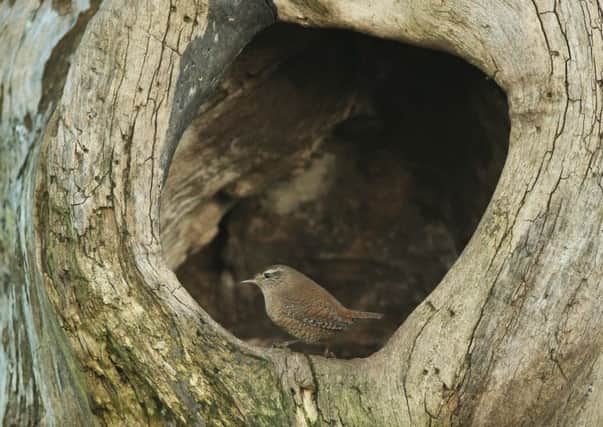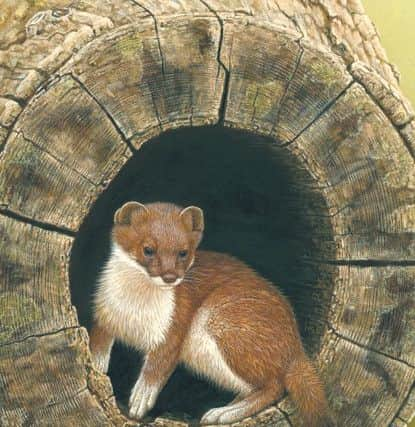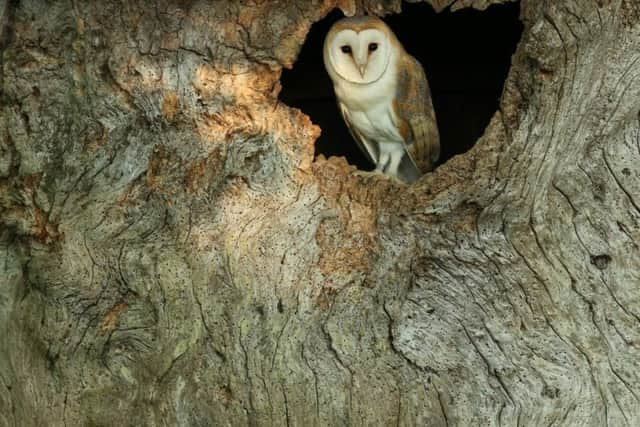Rare elms are still part of life's cycle in Thixendale


This big, beautiful, tree is one of just a handful of living elms left in the country. At one time these grand trees dominated the English landscape. But more than 60 million were killed in an epidemic of Dutch Elm Disease that all but obliterated the species.
At this time of year, with its leaves all gone, you can really appreciate the beauty of the tree skeleton of this particular elm. It has branches that twist and sweep gracefully to the ground topped by a thick thatch of twigs. On a winter’s evening pheasants roost on these branches, their dark silhouettes looking like huge Christmas decorations.
Advertisement
Hide AdAdvertisement
Hide AdBy day, this elm is a roost for tawny owls. In the summer, when the owlets fledge, they form a crèche in the branches and the parents sit close by keeping an eye on them.


Stoats also frequent the hollow around the roots and an array of small birds feed among the leaves. This year I also noticed, peppered through the branches of the elm, a clutch of barn owls. Barn owls are very wary of tawny owls, since tawny’s can be aggressive, so it was astonishing to see these two species of owl sharing the same canopy.
Although this tree is rare, all trees are known life-givers. Here on the Yorkshire Wolds, ash trees are particularly popular with green and great spotted woodpeckers as well as robins and redstarts. Tree creepers also like to nest under the peeling bark.
And I have found that even when trees have died, they continue to support life.
Advertisement
Hide AdAdvertisement
Hide AdElm is a very hard wood and many continued to stand long after being pronounced dead. Their trunks remained a feature of the landscape for years, like skeletons, their bark slowly peeling away and the bare wood beneath bleaching in the sun.


On the farm in Givendale where I grew up, I remember one dying elm with a large hollow burr on it. A pair of little owls returned there year after year to raise brood after brood. Another dying elm I knew of was home to a pair of barn owls and the roots of yet another became home to a stoat family.
Nine years ago I came across an enormous fallen elm during a cold winter walk. I loved the furrowed silver colour of the bleached bark. There was a section of it that had a worn entrance hole that was full of character.
Inspired by the gnarled shapes in the bark, I decided the hollow trunk would make a good prop for a bird to perch on in a painting. To persuade a wild bird to pose on, I hit on the idea of turning it into a giant nest box. With the help of a friend, I hoisted it into the back of his truck and took it back to my workshop.
Advertisement
Hide AdAdvertisement
Hide AdI spent most of that Christmas holiday sawing the edges of the jagged trunk to turn it into a usable bird box. It was a huge piece of timber, measuring 5ft high and 5ft across. I trimmed the top and bottom off so that I could put a roof and a floor on. But it was still too big to manoeuvre so I also sliced it down the middle, like an Easter egg, before attempting to hoist each half into place.


I chose to position the elm into the fork of a sycamore tree, growing, ironically, close to the live elm tree near my house.
I built a platform and placed it in the sycamore for the box to rest on. It was too heavy to lift, so I used a pulley attached to my car to winch it up into place. My wife drove the car slowly backwards whilst I stood on a ladder guiding it up. I put the two halves back together once it was up.
The following year a pair of tawny owls nested in this grand old elm nest box and it has been used every year since by different barn owls, kestrels and tawny owls. I have painted these bird’s portraits posed at the entrance of the box again and again.
Advertisement
Hide AdAdvertisement
Hide AdThree years ago I added cameras to the box so that I could watch the birds as they reared their young inside. This summer, eight barn owl chicks were raised there and I was able to watch them from the moment they hatched to their first, hesitant flights.


This autumn, my surveillance camera revealed a total of seven different species visiting the elm stump over the course of a week.
I watched transfixed as my recording played back a tawny owl, a pair of kestrels, a barn owl, a blue tit and a tree creeper – which climbed steadily up, and then down, the stump, combing the rutted surface of the bark for insects.
And these were just the bird species. The camera also caught a stoat investigating the box and a squirrel climbing awkwardly, one back leg stiffly following the other, through the hole.
Advertisement
Hide AdAdvertisement
Hide AdThe relationship between the wildlife species sustained by my decaying elm trunk is fascinating. The process is symbiotic. First the owls or kestrels nest inside, raising their young. Here they cough up pellets made up of the undigested skeleton and fur of the voles that they eat.
The clothes moth, Endrosis Sarcitrella, or white-shouldered moth, then lays its eggs inside these pellets. When the larvae emerge they feed on the fibres of vole fur before crawling up the sides of the inside of the tree hollow, to pupate in the crevices.
Here the larvae become fodder for tree creepers, wrens, blue and great tits, helping to sustain these small bird species through the winter months. The decaying pellets also attract flies, which in turn draw spiders that attract small bird species. And so the cycle continues.
It is heartening to think that my old elm trunk, nine years after I found it and took it home to use as a backdrop for my paintings, and possibly decades after it actually died, is still giving life to so many creatures. I am so impressed with it I have named it the ‘tree of life’.
Advertisement
Hide AdAdvertisement
Hide AdRobert’s gallery in Thixendale is open during the festive period. Visitors will be able to see the action unfolding inside Robert’s ‘tree of life’ bird boxes via television screens. See www.robertefuller.com for gallery opening times.